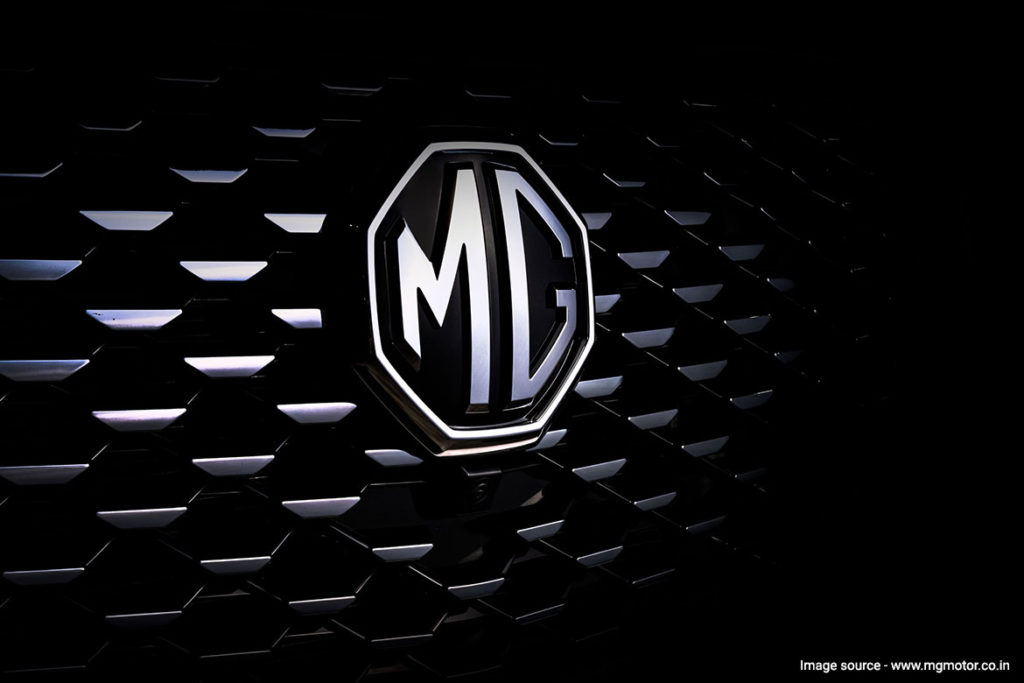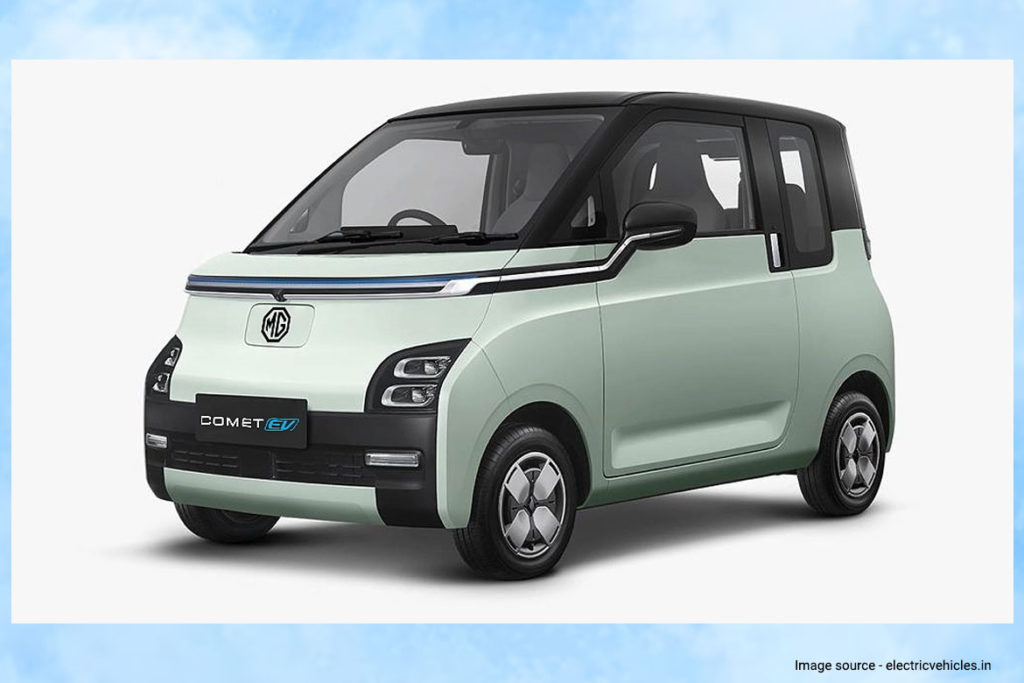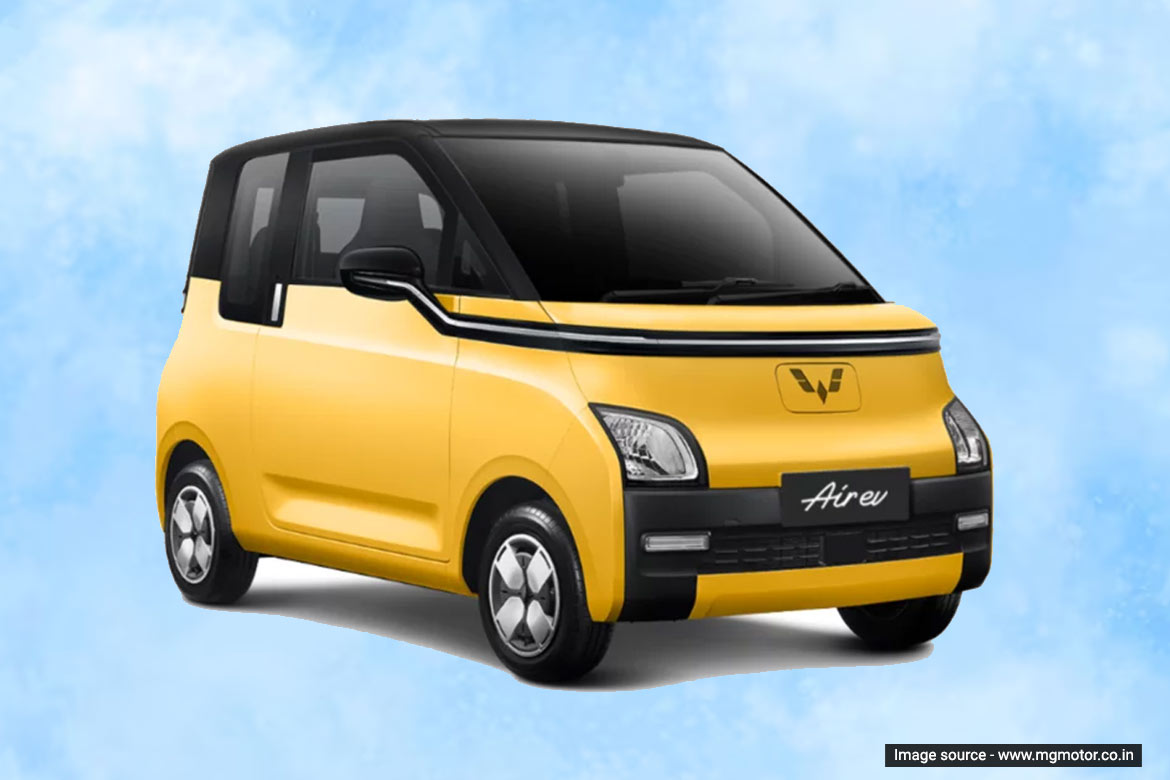MG Motor has developed a new small electric vehicle for the Indian market. The new model, which will be positioned below the ZS EV, is expected to be introduced in the first half of 2023. The new small electric vehicle will cost between Rs 10-15 lakh (ex-showroom). Its positioning is unique; more of a lifestyle EV than a low-cost electric hatch, it is a car that elevates the humble hatchback to an entirely new level.
Exterior and design
First port of call is the nose, with its mini shelf-like bonnet. It breaks up the monotony of what is essentially a one-volume design. The piano-black chrome and LED strip that runs around both the front and rear adds sophistication, and the low-set headlights with chrome bracketing make it appear more upmarket.
The ‘pillarless look’ provided by the flush-mounted front windscreen, front quarter glass, side window, and fixed ‘dropped’ rear window is the most impressive feature. And it’s awesome; this car has more attitude than anything else. It’s small.. Just It’s 2.9 metres long and 1.5 metres wide, with tiny 12-inch wheels and narrow 145mm tyres.
Interior, space, and features of the MG Comet

To begin with, there is nothing cheap or basic about this. There’s no cheap plastic, no crude bits, and the cabin doesn’t feel like it was designed by a cost accountant.
The colour palette and details are both visually appealing and extremely classy; it’s bright, open, and full of high-quality bits that wouldn’t look out of place even on MG’s Hector. Look at the beautifully crafted steering wheel.
The twin 10.25-inch screens are placed in the same plane as Merc, and there’s what appears to be a solid billet of aluminium with neat-looking rotary air-conditioning controls. I also like the knurled chrome finish on the rotary gear selector, which is housed in its own little pod, and how the door pads are finished in grey and white..
It is also worth noting that the touchscreen functionality is excellent; it is sharp, slick, logically laid out, and simple to use. You can also rearrange widgets and customise your home screen. While the screens are placed low and forward visibility is unaffected, the steering wheel does occasionally block the instrument panel. Other flaws include the lack of a glovebox, the fact that two large passengers sitting side by side will rub shoulders in corners, the lack of a spare tyre, and the fact that you can only use the boot if you flip one of the rear seats forward; they split 50:50.
However, the space and comfort in the front are quite good.. The cabin isn’t particularly large, but because it’s an EV with a flat floor and a tall roof, it feels spacious. The white and grey colour scheme also helps. Furthermore, the large front seats with integrated headrests are soft and supple, with adequate shoulder support. They’re even big enough to keep you comfortable for hours.
Because there are no rear doors, you must fold the front seats forward and slide past into the back. This isn’t too difficult because the gap between the front seat and the door is large enough to allow you to easily slide in. Legroom and headroom aren’t too bad in the back, and the long rear window floods the cabin with light. However, the seat is low and you must sit with your knees raised; additionally, there are only small fixed headrests.
ABS, twin airbags, a tyre pressure monitoring system, and ESP are all standard features on top-of-the-line cars in India. Other features include, among others, an electric parking brake, hill start assist, LED head and taillights, and keyless entry.
Performance, ride, and handling of the MG Comet

Read more: PMV EaS-E EV: Check out the most affordable electric car in India, costs less than 5 lakhs
It may only have 40.7 horsepower, but it has very little weight to move. What makes it feel eager is that all of the torque is available as soon as you press the accelerator. There is no sudden surge of power, rather a gradual build-up; however, drive MG’s baby with a generous helping of the right foot, and it will easily pass slower traffic.
This is especially true between 40 and 70kph, which appears to be a sweet spot, and where a dab on the throttle is enough to enjoy short bursts of acceleration. Switching from Normal to Sport also helps to boost it. However, performance flattens once you exceed 85kph, and after that, there is only a gradual increase in speed. The clock reads 105kph, which should translate to around 100kph in real life.
Surprisingly, given its tiny 12-inch wheels and narrow track, the vehicle’s speed stability is also quite good. However, at higher speeds over undulations, small corrections are required as the car shifts and shuffles over bumps. You have a good view outside and are sitting at a good height. The brakes work well, the pedal feel is surprisingly good, and there appears to be plenty of stopping power in reserve. There are three levels of regen to choose from, making it simple to customise the car.
The MG Comet, on the other hand, excels in city driving, where the deliciously light steering, instant responsiveness of the electric motor, and smooth running make this car refreshingly easy and light to drive. The baby MG can even ride well. Everyday bumps and ruts are ridden over in a controlled and well-damped manner, with no thud or heave-ho from the suspension. Yes, large holes and deep dips upset its equilibrium and throw it off balance, so you must slow down or avoid them.
It also rides quietly, with only a hint of road noise and electric motor whine at higher speeds. It can even handle large speed breakers with ease. While city agility is good, this is not a car that enjoys being driven fast in corners. Even at medium speeds, there is body roll, and the weedy tyres provide little grip. As a result, it is best driven in a relaxed manner.

